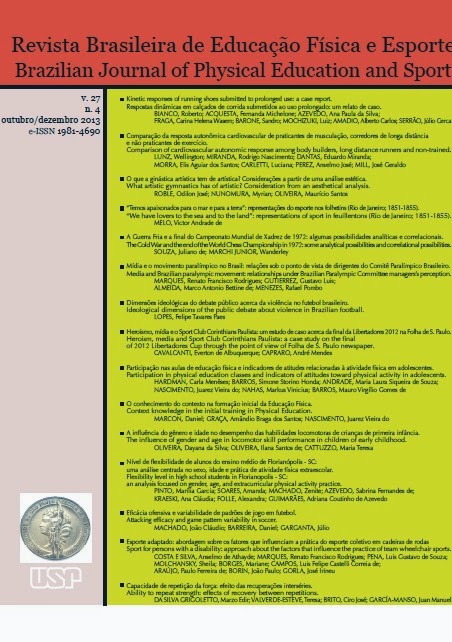Ability to repeat strength: effects of recovery between repetitions
DOI:
https://doi.org/10.1590/S1807-55092013005000016Abstract
The progressive training sessions with overloads are the most used strategies to elicit greater adaptive response to specific aims in strength performance. The total work with overload is a relevant factor in performance improvement. However, overload training affects mechanical muscular response, which triggers the onset of fatigue. The muscle fatigue reflects the loads characteristics (volume, intensity and recovery). In order to avoid the excessive fatigue while maintaining appropriate mechanical techniques, it is necessary to manipulate the recovery. Add more time between sets is the most applied strategy. According to the current researches, it seems that the best way to get both goals (less muscle fatigue and equal efficiency volume), is due to intra-set rest (ISR), which may be achieved by adding inter-repetition rest (IRR) in each repetition or cluster of repetitions within sets. These methodological approaches allow us to maintenance of technical characteristics (speed, strength, power) within many repetition-sets.Downloads
Download data is not yet available.
Downloads
Published
2013-12-01
Issue
Section
Ensaios
License
Todo o conteúdo da revista, exceto onde está identificado, está licenciado sob uma Licença Creative Commons (CC-BY)
How to Cite
Silva-Grigoletto, M. E. da, Valverde-Esteve, T., Brito, C. J., & García-Manso, J. M. (2013). Ability to repeat strength: effects of recovery between repetitions . Brazilian Journal of Physical Education and Sport, 27(4), 689-705. https://doi.org/10.1590/S1807-55092013005000016


